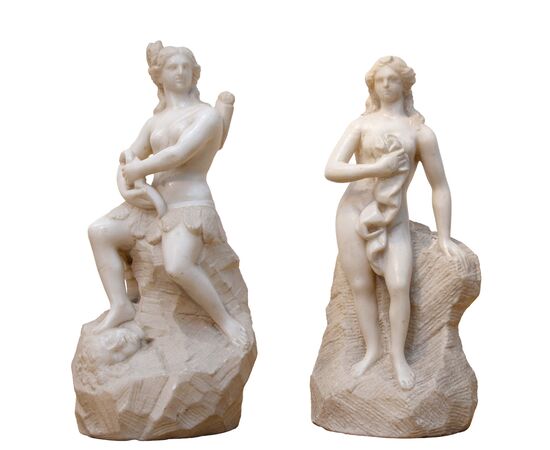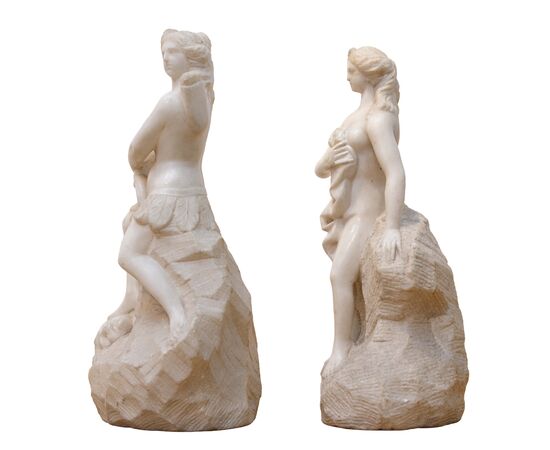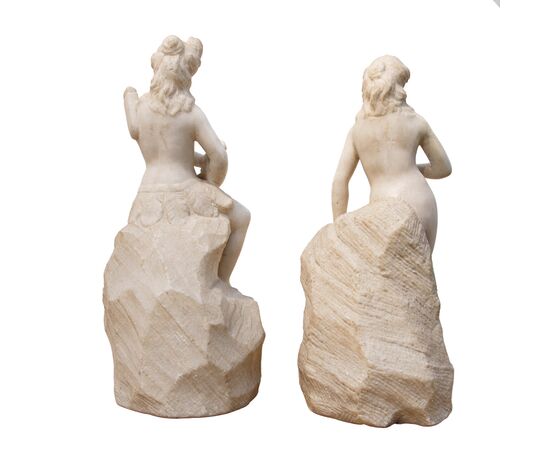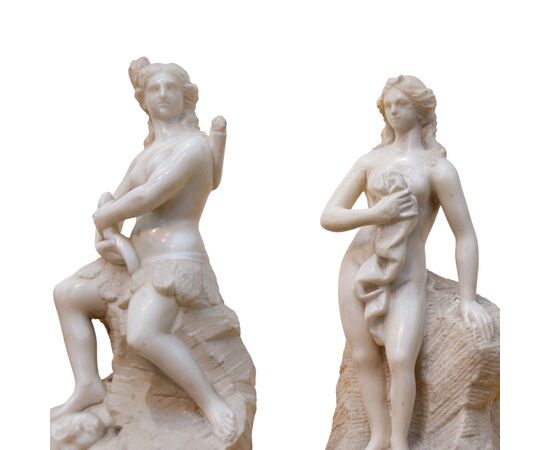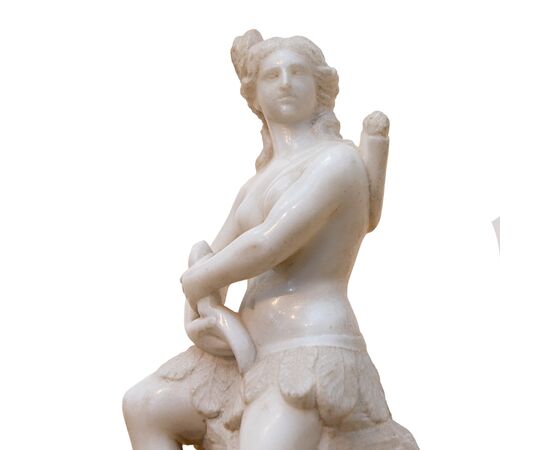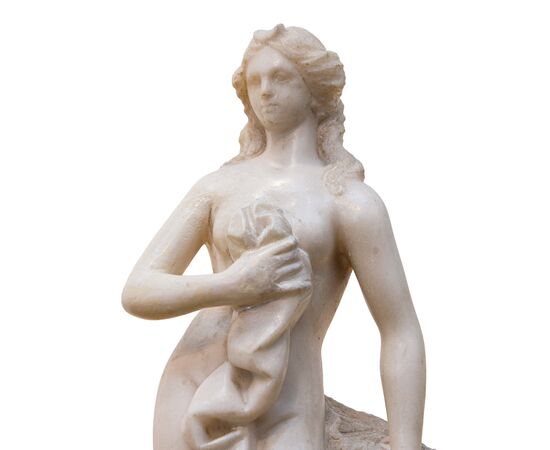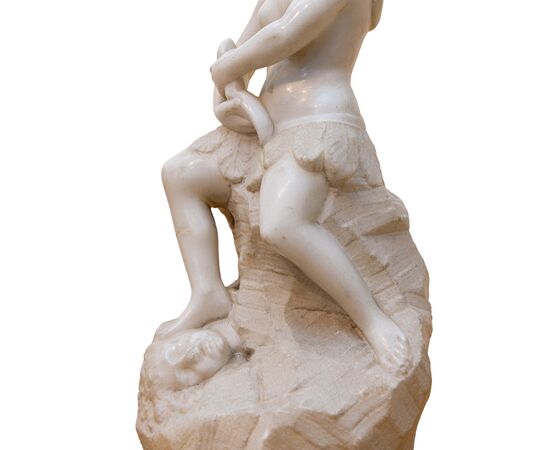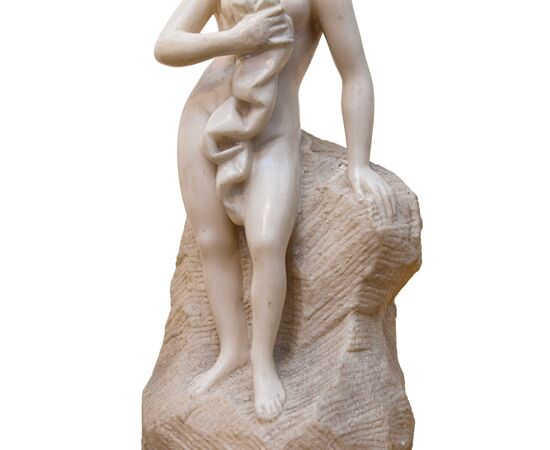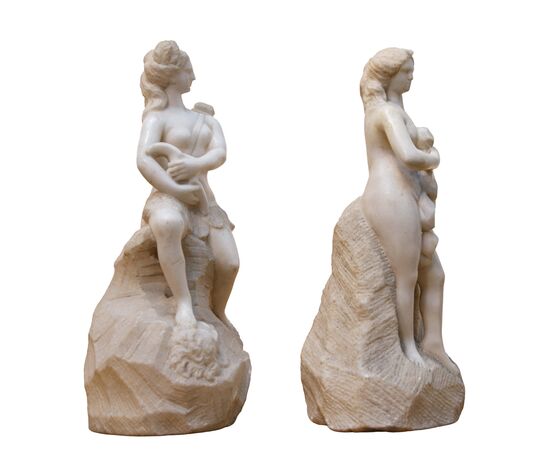Female hunting figures
Circle of Francesco Bertos (1678-1741)
Female hunting figures
(2) Marble, height 30 cm
The pair of marble sculptures we present here fits within the Venetian sculpture of the early 18th century and, in particular, within the circle of Francesco Bertos, a sculptor and founder born near Venice, specifically in Dolo, along the Brenta River. The reconstruction of his biography has been quite difficult for critics, so much so that they have not been able to confirm with certainty the long-held hypothesis of his youthful trip to Rome. A more careful examination, thanks to new studies carried out on the occasion of the recent exhibition dedicated to him at the Gallerie d'Italia in Vicenza, has instead considered trips and experiences in the Venetian territory or in the neighboring Romagna as more plausible, thus outlining a training linked to the land of origin, where the Bonazza workshop operated, founded by his contemporary Giovanni, of whom he was also a collaborator. The latter was a pupil of the Flemish artist Giusto Le Court, active in Venice and an exponent of that virtuosity of the Flemish and German sculptors of the 17th century that so inspired Bertos in the meticulous realization of small sculptural groups in bronze and marble. Other sources of inspiration external to Venice were those of Tuscany, such as the works of the Florentine Giovanni Battista Foggini, a sculptor and architect contemporary at the service of the Medici, and those of a mannerist style by Giambologna, whose compositions - such as the Rape of the Sabine Women (1579) - were an inspiration for Bertos' most original sculptures. In fact, his fame will be established among the great European patrons, such as Tsar Peter the Great, King Charles Emmanuel III of Savoy, and Doge Alvise Pisani, thanks to works of small size but made with meticulousness and through compositions of extreme complexity and with a dynamic structure free to expand in space. Bertos' incredible technical ability amazed his contemporaries so much that this mastery was considered almost superhuman, even attracting the attention of the Inquisition, which accused him of having made a pact with the devil. In addition to this much-vaunted technical virtuosity, Bertos' sculptures hide a cultured, allegorical, mythological, and symbolic dimension that allows them to be interpreted as precious intellectual games, also present in this pair of statuettes connected not only by gender but also by the hunting theme, treated by the artist in other sculptures such as the Allegory of the Hunt at the Royal Palace of Turin. If one can be interpreted as Diana, the Roman goddess of the hunt perhaps represented here in the act of drying herself after bathing, the other would seem to be a hunting deity closer to the allegorical representation of the American continent, often depicted with bow and arrows and in a vigilant and combative attitude. The dynamic and fluid poses, the accuracy of the workmanship, the small size, and the subtlety with which the theme of hunting is allegorically treated appear therefore as clear references to the art of this sculptor and to the culture of the period and of the areas in which he lived and worked.

